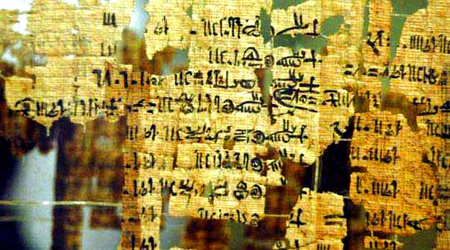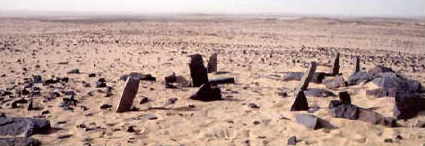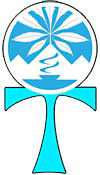age of belief
The IRS sets a standard of the age of a belief. My own religion is the oldest continually practiced religion in the world and a direct descandant of the first known religion in the world.
legal standards
“almost 300 years of consistent practice” (in reference to the age of Amish) —Wisconsin v. Yoder
“a distinct religious history,” —IRS definition of a church
religious freedom reply to IRS standards
The problem with the fifth criterion is that a new religion, by definition, cannot have “a distinct religious history.” “American civilization from the beginning and in each passing century has been continuously marked by extraordinary religious fertility and continues to exhibit this propensity to the present day.” The emergence of new religions is a common occurrence in American history. “The first Amendment serves to protect all religions, old and new, against government harassment, intrusion, injury and discrimination.” Baptists, Quakers, Mormons and Jehovah’s Witnesses each experienced persecution in America when their churches were new. Although no one would dispute that this history is unfortunate, a similar dynamic is at work in the present attitude of many in government toward new religions. Moreover, even established religious groups might not have a distinct history. “Due to the informal nature of the Plymouth Brethren, their religious history is indistinct.” — “Defining Religion in American Law” by Bruce J. Casino, International Coalition for Religious Freedom
cannabis sacrament
In 1979 the Supreme Court of Florida found that (1) the Ethiopian Zion Coptic Church represents a religion within the First Amendment to the Constitution of the United States and (2) the “use of cannabis is an essential portion of the religious practice.” Town v. State ex rel. Reno [external link], 337 So.2d 648, 649 (Fla. 1979), ceret denied, 449 U.S. 803 (1980). “Further, the Ethipian Zion Coptic Church is not a new church or religion but the record reflects it is centuries old and has regularly used cannabis as its sacrament.” [source: Ethiopian Zion Coptic Church: Fighting for our rights]
Kemetic or ancient Egyptian religion
If a mere 300 years is enough to qualify the Amish as a legally valid religion, then Pr Ntr Kmt (Kemetic Withcraft) with more than 12,500 years of archaeologically proven existence surely qualifies as being old enough to be a legally valid religion. That’s more than seven times the age of the Roman Catholic Church.
Pr Ntr Kmt (often translated as “Egyptian Witchcraft” or “the ancient Egyptian religion”) is the oldest known established religion in the world.
The religion is deeply embedded in Western culture, as well as African, European, Asian, Chinese, and Indian culture. The religion is deeply embedded into the English language itself.
The use of cannabis in Pr Ntr Kmt has been carved in rock for thosuands of years.
A residual version of this ancient practice survived in the Christian Coptic Church (mostly in Egypt, Sudan, and Ethiopia) using cannabis during religious services on a widespread basis well into the 20th Century (1900s) and less commonly to the present.
Egyptologists know that the Egyptian culture and religion predates the Pharaohs, but they are not certain by how long. Egyptologists generally agree that dates back to at least 5,500 B.C.E..
French Egyptologist Gaston Maspero (1846-1916) stated about Egyptian texts, “The religion and the texts which made it known to us were already established before the first dynasty. In order to understand them it is up to us to put ourselves in the frame of mind of the people who constructed them, more than seven thousand years ago.”
Ramese II (Ramses the Great) listed all of the historical and divine pharaohs who reigned over Kemet (ancient Egypt). A copy of this royal canon is on display at the museum of Egyptology of Turin (and is called the papyrus of Turin). Ramses claimed that the royal Egyptian lineage predated him by 13,420 years (yes, notice the 420 in the figure). Ramses lived from 1303 B.C.E. to 1213 B.C.E. and started his reign May 31, 1279 B.C.E..

fragment of the Papyrus of Turin
The Palermo stele also cites the same list, stating the Heru Sa Aset (Horus) personally reigned over Kemet.
Egyptian High Priest Manetho (Ma-n-Thoth) of Sebennytos (in the Nile Delta), Master of Secrets at the Great Library of Alexandria in the 3rd century B.C.E., wrote a 30 volume history of Kemet in Greek, the Aegiptiaca, that listed these historical and divine pharaphs. Manetho claimed that Thoth personally ruled from 8670 to 7100 B.C.E., “after the night of the battle.”
Manetho’s dates for the historical pharaohs is still used by modern Egyptologists. Manetho dates Kemet to 33,894 B.C.E..
The standing stones at Nabta are estimated to have been erected between 6,400 and 4,900 B.C.E. (more than a thousand years before Stonehenge).

Calendar Circle at Nabta
reciprocity
The earliest known affirmation of the principle of reciprocity is found in the story of the Eloquent Peasant, from the Middle Kingdom: “Now this is the command: Do to the doer to make him do.” This is a reference to the use of the Law of Ma’at.
A Late Period papyrus states: “That which you hate to be done to you, do not do to another.”
Chinese religion
Joseph Needham (a sinologist and historian) stated “the hallucinogenic properties of hemp were common knowledge in Chinese medical and Taoist circles for two millennia or more.”
Joseph Needham and many other scholars associate Chinese wu (shamans) with the entheogenic use of cannabis in Central Asian shamanism.




